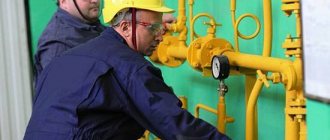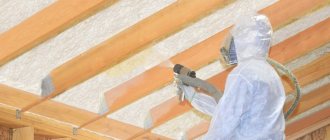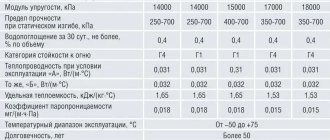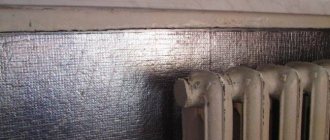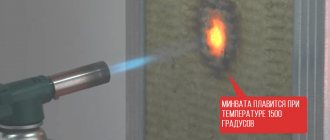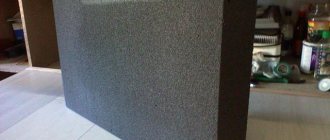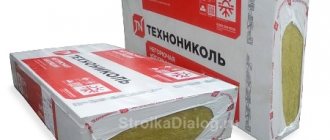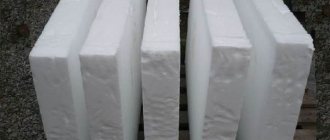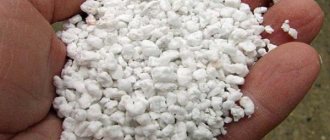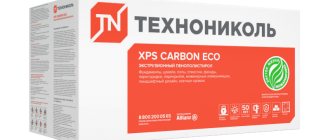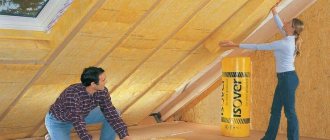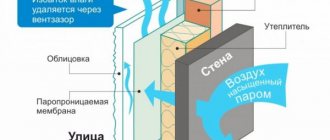What is liquid thermal insulation
Let me start with the fact that the development of this product has been carried out since the seventies in the military space industry of both our country and America. A lightweight material was required, but with unique heat-insulating properties. Today, all advanced technologies have migrated into our everyday lives precisely from the military industry. And warm paint in this case is no exception. Now all the best is for peaceful purposes.
Insulation paint is a polymer binder made of acrylic or latex. It also contains fillers made from the smallest ceramic, glass or polymer beads and various additives that determine different areas of application. In a word, this is a complex chemical compound, the development of which took a lot of time and money.
How does modern insulation paint work?
Due to its unique properties, liquid insulation already begins to work at a thickness of 1 mm. This breaks the whole stereotype in our usual insulation. After all, we are used to the more the better. In this case, no more is needed. 1 millimeter of heat-insulating paint is approximately equal in thermal insulation to 5 cm of mineral wool insulation. Agree, this is a worthy indicator.
Once upon a time, while studying at school, we were taught that vacuum is the best insulator. Sound, heat, and electricity do not travel through it. This explains the phenomenal effect of using heat paint. Since there is a vacuum in the microscopic ceramic balls, the result is a kind of mini-thermos, of which there are millions, and maybe billions.
Due to such a complex molecular structure, thermal energy is reflected. All three types of heat transfer, namely convection, conduction and radiation, are almost completely reflected. The protected surface always remains pleasantly warm.
What are the features of using heat-insulating paint
Thermal insulation paint, which recently appeared on the insulation market and has already gained certain positions, is easy to use, but has its own specific characteristics. Water-acrylic paint with a heat insulator in the form of gas-filled or vacuum ceramic microgranules can have various fillers, which actually determine the areas of their application, about which there is information posted on buckets of insulating paint. To increase the thermal insulation properties and noise absorption, perlite is added to the composition, and to increase the strength of the coating, fiberglass or foam glass is included in the composition.
Application of thermal insulation paint in a boiler room
When processing the material one-time, a coating 1 mm thick is formed, but the desired effect is achieved only by several layers of paint, forming a heat-insulating coating 6 mm thick. The coating is applied with a spray gun or roller, and in difficult, inaccessible places with a brush. The drying time for each layer is 12 hours, and the finishing layer is 24 hours, after which a durable film is formed that is resistant to mechanical damage. The peculiarity of the heat insulator is that under the polymer protective film there are many ceramic granules that reduce heat loss and reflect the heat flow indoors.
Important! The effectiveness of a six-millimeter coating is comparable to the effectiveness of 50 mm thick mineral wool.
Due to its special physical and chemical composition, thermal paint is characterized by increased consumption compared to other paints and varnishes. For well-prepared primed surfaces, consumption per 1 sq.m. equals 1 liter with a layer thickness of 1 mm. When processing porous absorbent surfaces, material consumption increases by 10-20%, which must be taken into account when calculating the amount of liquid thermal insulation to be purchased.
Application of thermal insulation paint in a boiler room
Another feature of heat-insulating paint is the simplicity of insulation work, which can easily be done with your own hands; the only thing that is required is that the surface be prepared, primed, dried and that the temperature be from 8 to 80 degrees Celsius. If all manufacturer and technology requirements are met, thermal paint retains its protective characteristics and structure for up to 40 years.
The product can withstand a wide temperature range from -70 to +260, at which all declared properties are not lost, and only after the temperature exceeds 260 degrees does the paint begin to char, but does not catch fire. This important property indicates that heat-insulating paint reliably protects surfaces from fires.
After treating pipelines with a liquid heat insulator, condensation no longer forms on them, and corrosion processes completely stop, which significantly increases their service life.
Application of thermal insulation paint in a boiler room
The only drawback of thermal insulation paint is the high cost per square meter of coating compared to other insulation materials, but this is conditional, since the same mineral wool is only part of the required set of materials for traditional insulation. In addition, it is necessary to purchase bars or metal profiles, rolled vapor barrier, fasteners and pay for installation work on facade insulation. While insulation with liquid thermal insulation is no more difficult than conventional painting with a spray gun or roller.
Thermal insulating paint for walls: composition and scope of application
The composition of paints for thermal insulation is a mixture of:
- fillers;
- evacuated glass beads;
- water;
- acrylic-based dispersions;
- fiberglass;
- foam glass;
- perlite (in expensive types, perlite is replaced with ceramic microspheres).
Scope of material application:
- facades;
- pipes, including heating mains, water supply, gas;
- heating boilers;
- insulation of tanks and industrial equipment;
- walls in the apartment;
- basements.
The paint is applied in a relatively thick layer (4 mm), and therefore its use can replace several millimeters of external insulation or serve as an additional heat preservation system.
The condition for the thermal insulation function is an even layer around the perimeter, and therefore it is better to use a spray gun to evenly distribute the viscous consistency
Types of thermal insulation paint
There are 3 principles for dividing thermal insulation paints. The first is by their purpose. Accordingly, there are compositions for facades, walls and pipes. The latter include coatings for ventilation systems, water pipes, gas pipes and air conditioning units. As a rule, paint is suitable for the entire list. However, there are also highly specialized formulations.
Thermal insulating paint for pipes , walls, facades, can be on different bases. Here the division into:
- Acrylic paints. These differ in density, similar to a thin layer of plastic or rubber on the wall. Acrylic is easy to paint, even in acid colors. So, the paint category amazes with its tonal options. Colors do not fade when exposed to ultraviolet light. Therefore, acrylic paints are most often used on building facades. Also, the polymer does not allow water to pass through, which means it is suitable for use in bathrooms and swimming pools. The coating can be washed with a soft brush.
- Water paints. They can be emulsion, that is, washed off with water. It is better not to rub the coating. Because of this inconvenience, more dispersed paints are produced. They are also water-based, but can be cleaned with ordinary products and usual methods.
The third classification of thermal insulation coatings was briefly touched upon. We're talking about paint fillers. All of them serve as insulators separately. If you deprive the paint of filler, it will become ordinary acrylic or water-dispersed. It remains to find out how the granules and fibers added to the composition differ:
-Fiberglass has a thermal conductivity of 0.030 W/m*K. However, this is an indicator of glass wool, a popular insulation material for houses. Air is trapped in the material between the glass threads. It's basically what keeps the heat going. There is less gas in the paint between the mineral fibers. The space is filled with a polymer composition. Therefore, the thermal conductivity of the mixture is greater than that of pure mineral wool. But its fibers make the paint flexible. There are no cracks in the coating.
-Perlite is a type of volcanic glass. The scientific name of the mineral is obsidian. It is formed from lava. If it hardens quickly, the rock becomes dense, like glass. But with slow hardening, the rock turns out to be smooth on the outside (this crust has time to set in minutes) and porous on the inside. Expanded perlite gives the paint a matte tone.
-Foam glass is also granulated. Externally, the material can be confused with perlite or crushed granite. The molten glass is filled with air bubbles when the gas generator is burned. Its role is played by coal. All that remains is to cool the mass and break it into grains of sand.
-Ceramic microspheres are filled not just with gas, but with rarefied air. Manufacturers are striving for a vacuum. It conducts heat and cold even worse than the normal atmosphere. Thermal insulation made of ceramics is an idea of NASA. The invention was created to prevent spacecraft from overheating. They have a coating with microspheres - that same addition to a number of other measures to stabilize the thermal background.
In Russia, for example, heat-insulating paint “Korund ” is sold with microspheres. The binder in it is acrylic. There is no more than 20% of it in a paint can. The rest are vacuum microspheres. From the sphere of space they “descended” to earth. How to use granulated and glass fiber paints at home? Let's figure it out.
Functional Features
The quality of thermal protection of thermal paint directly depends on the applied layer and the number of stains. However, it is also not recommended to apply an excessively thick layer; the best option is 2-4 paintings, no more than 6 mm thick. The number of layers depends on the type of heat-insulating liquid material, as well as on the type of surface to be applied. The service life is 12-40 years, and the temperature characteristics are -70°C, +260°C.
Main advantages
The main advantage of liquid insulation for work inside buildings is thermal insulation without reducing space. It is important to note the material’s resistance to temperature changes, which occurs in winter during the heating season: it’s minus outside and plus inside, condensation collects, which forms a favorable environment for the development of fungus. Additional benefits:
- environmental friendliness - the paint does not emit harmful toxic compounds at high temperatures and does not react with other building materials;
- saving on heat bills due to thermal insulation;
- strengthening treated surfaces.
Distinctive characteristics and properties of thermal insulation paint
Ease of application is a big plus. Thermal insulating paint can be applied in a variety of ways, including roller or spray. When the area to be treated is large, a spray gun will be more useful.
Akterm is a liquid thermal insulation similar to paint. This is a practical consistency suitable for various types of surfaces. With prolonged exposure to air (about 24 hours), the mixture polymerizes. So it becomes a thermal barrier. In summer, thermal paint reflects 95% of the sun's rays. And in the winter months, on the contrary, they return (this volume will be about 70%). AKTERM does not require special conditions for application. So, a temperature of at least 20 degrees C is sufficient. And during operation, the product will withstand up to -60°C. And if the surface with paint becomes dirty, it can be easily washed, and it will again become not only functional, but also aesthetic.
Today, energy-saving technologies are becoming increasingly relevant as a construction issue. The modern market offers consumers innovative developments in this area, embodied in high-quality universal materials. They are designed to provide maximum protection of the home from adverse natural factors and proper thermal insulation of the premises.
Thermal insulating paint is a new product on the building materials market. Its purpose is to reduce heat loss in a building, in particular in a house. Having a liquid consistency, the material is easily applied to any type of surface, even deformed. The material is completely safe for human health and the environment, being a composite thermal paint, which includes a polymer matrix and a filler - hollow microspheres.
The range of properties of heat-insulating paint is very wide:
- Prevents cold from penetrating into the room
- Prevents corrosion on metal surfaces
- Excellent heat retention
- Prevents moisture from entering, eliminates mold
- Eliminates condensation
- Saves electrical energy
The thinnest layer of insulating paint can completely replace the traditional thermal insulation system of a house. Liquid insulation has a very reasonable cost and efficiency, which is also one of the factors in favor of its choice.
Application of thermal insulation paint
Due to their thick consistency, thermal insulation coatings are difficult to apply with brushes and rollers. Spraying with a spray gun is preferable. The first of them was created back in 1907. Alain DeVilbiss tried.
The American worked as a doctor. At the service, a man noticed spray guns. Doctors used them to disinfect wounds. Alain came up with an alternative application and opened the production of spray guns.
At the beginning of the 20th century they were mechanical. Most modern models run on mains power or batteries. By pressing the lever, we start uniform spraying of paint. It lays down without sagging or sagging.
If you don’t have a spray gun at hand, apply heat-insulating films with a roller. True, the mixture consumption in this case is greater. An inexpensive spray gun, by the way, costs a little more than 1000 rubles. The device is quite enough for home repairs.
Painting with a heat-insulating composition consists of 3 points:
- Cleaning the base. Dust, grease, and soot are removed from it. If paint is applied to metal, it is treated with a rust converter for 3 hours. If a concrete or brick base is made, the plaster is removed from it. The cleaned surface is puttied, sanded and blown with an air blower.
- If the paint is too thick, it is diluted with water. Mix by hand or with a drill. An electrical appliance can destroy perlite, ceramic spheres, and break glass fibers. Except for this, the drill is set at low speed.
- Paint application takes place in 2-3 stages. Multi-layering provides maximum heat saving effect. Otherwise, why overpay for paint? There are similar acrylic compositions that are 2 or even 2.5 times cheaper.
Use of painted surfaces begins within 24 hours. The first day is the time for the coating to set with the base and completely harden.
How to choose?
When choosing a thermal insulation material, it is important to consider the location of the painting work (indoors or outdoors) as well as the type of surface being treated. Before purchasing thermal paint, it is also advisable to familiarize yourself with the list of popular manufacturers and study reviews of their products.
Some recommendations for selection:
- for exterior work, you should select paint with high levels of water resistance and heat resistance;
- for indoor work, you need to purchase paint that does not contain toxic substances;
- the mixture for painting gas and water pipes must have the highest heat resistance.
It is worth remembering that when painting, quite a lot of heat-insulating composition is consumed. Before purchasing a suitable liquid insulation, it is important to calculate in advance the required amount of mixture.
When calculating, the following factors must be taken into account:
- Surface area to be painted.
- The type of material that will be coated with paint and varnish. To cover a wooden, brick or concrete surface, paint overconsumption can range from five to ten percent. Painting the metal may require an additional three to six percent of the mixture.
- Presence of defects on the surface. If there are small cracks or irregularities, it is worth considering that painting such areas will require an additional amount of liquid heat insulator. Overconsumption of the mixture can reach forty percent.
- The number and thickness of paint layers you plan to apply to the surface. Recommended coating thickness for different materials:
- For concrete - one and a half millimeters.
- For wood - two millimeters.
- For metal, brick, cellular concrete and expanded clay concrete - two and a half millimeters.
To calculate the approximate amount of paint, you need to multiply the surface area, the consumption rate (liter/sq. m) and the number of intended layers.
How to choose and use heat-insulating paint correctly
You need to take into account some parameters in advance in order to make the right decisions:
- Surface area and processing method. Material consumption increases when it is applied with a roller or brush. Spray guns and sprayers ensure uniform distribution over the surface. But such equipment is not necessary if the owner works with small areas;
- The purpose for which thermal insulation paint is applied. For example, which surface is subject to mandatory treatment - bricks and wood, metals or concrete. Depending on this, a variety with suitable properties is selected - fire resistance, prevention of corrosion processes with fire resistance, and so on. The composition must exclude toxic substances when working inside;
- Color. It is largely related to the purpose and scope of application.
Spray guns and sprayers ensure uniform distribution over the surface.
Varieties
The type of warm paint is conventionally divided according to two characteristics:
- composition: acrylic or water base;
- by area of application: for indoor work, for pipes, facade - exclusively for outdoor work.
Thermal insulation paints for interior work
For work inside buildings, both acrylic and water-based compositions are suitable. An important task is to determine the functional load, as well as study the composition, which should not contain toxic components. To treat pipes, heating mains, and gas pipelines indoors, use interior paint, preferably acrylic-based, and for painting cold walls, you can use a water-based composition.
Insulating paints for exterior work
For outside work, it is necessary to select thermal insulation materials taking into account the functional characteristics of the surface and environmental conditions (humidity, frost, sunny side). It is better to choose a mixture with minimal water resistance and the highest vapor permeability, so that heat will be retained and the treated surfaces will not deteriorate.
Types of paints
The photo shows a comparative description of insulating materials.
Liquid thermal insulation Korund, Teplosil, Teplomet, Asstratek, Izollat, Re-Term, as well as other samples are presented on the construction markets. Such universal new products are much superior to all roll and panel insulators.
After all, liquid ceramic insulation is also used to eliminate condensation on pipes, thermal insulation of tanks, containers, and pipelines.
Armor – ultra-thin thermal insulation
We can apply this ultra-thin liquid insulation to virtually any substrate.
The uniqueness of Bronya insulator is that it is applied like paint and acts as a powerful thermal barrier. As a result of polymerization, a flexible, slightly matte surface is formed, which has excellent thermophysical properties: 1 mm of liquid Armor will replace 60 mm of mineral wool and create strong anti-corrosion protection, relieve the object from burns, make it impossible for condensation to form, and the appearance of icicles on the roof.
The ultra-thin film from this paste is ideal for walls inside the house, window slopes, water supply and smoke pipes, steam pipes, and air ducts. What can I say, it is even used in shipbuilding! After all, the Bronya ceramic insulator is active at temperatures of – 60 C – + 200 C (and more) for 30 years.
Akterm paint
Thermal insulation Akterm
- Temperature operating conditions for this newest ultra-thin liquid insulation: -60 C – + 600 C for more than 15 years. This temperature range greatly increases the scope of its application: from cozy bedrooms to hangars and refrigerators.
- Using Akterm liquid with the consistency of paint, we can insulate any surface.
- This thermal insulation is extremely light, non-toxic, safe, economical and guarantees us warmth, comfort and maximum energy savings.
- High-quality insulation of plastic windows is possible with this very thin insulation.
- The liquid will ideally cover concrete, plastic, metal, wood.
- Akterm will also become the strongest thermal protection for heating pipes and objects with high humidity.
- We can insulate pipes, containers, and brick interior walls with this paint even in winter - the universal, improved modification of Akterm Nord on a nitro base will provide a durable coating at -25 C.
Modifications of the Akterm series
Advice! To insulate an already hot pipe (+ 90°C and above), you need to add water to this paste and stir until it reaches the consistency of sour cream.
- We will first coat surfaces that are heavily corroded with orthophosphoric acid, which converts rust. Then we will paint it with energy-saving anti-corrosion insulation Akterm Antikor on a nitro basis. We apply it to rust before coating it with heat-resistant paints.
- To insulate pipes and walls from the outside we use Akterm NG insulation - a unique non-flammable modification. Experts recommend using this water-based paint as a finishing layer on the above water-based insulation materials.
Standard – advanced energy-saving paint (water-based) for interior work.
- Actterm Standard has been performing its functions for decades at temperatures from – 60°C to +260 C. It can be applied to metal, concrete, brick, that is, it can be used to insulate walls, ceilings, and floors at a minimum of + 7 C.
- Akterm Facade, in addition to the properties already mentioned, has good vapor permeability, which is especially necessary for structures made of wood, concrete, and brick.
- Akterm Vulcan is a water-based liquid product mainly used in production facilities with significant temperatures up to + 440 C.
Manufacturers
In order not to make a mistake in choosing a high-quality thermal insulation coating, it is better to purchase products from well-known and trusted manufacturers. Among Russian manufacturers of thermal insulation paints, four leading ones can be identified:
One of the most popular manufacturers of thermal insulation mixtures is.
Liquid heat insulators from this company can be used to treat the following surfaces:
- metal containers;
- rooms with high humidity levels;
- boiler rooms;
- facade of buildings;
- surfaces inside residential and administrative buildings;
- chimneys;
- motor transport, passenger aircraft, railway cars;
- pipelines.
produces several types of paints and varnishes, depending on their scope of application. The following modifications of Korund products are produced:
- "Classic". A universal coloring composition that is suitable for external and internal work. Widely used in building construction.
- "Facade". This heat insulator is designed for treating concrete walls. Painting can be done both outside and inside the room. The material has a high level of waterproofness and heat permeability. The coating protects the walls from overheating in the warm season and from freezing in the cold season.
- "Lotus". It has the same qualities as the “Facade” modification. This material is intended for application to the surface in the form of a final layer.
- "Winter". A distinctive feature of this modification is that the dyeing procedure can be performed at sub-zero temperatures. You can work with such material at temperatures not lower than -10 degrees.
- "Anticor". Used for painting metal surfaces. This paint and varnish material protects the metal from atmospheric influences and prevents corrosion.
"Termalcom"
produces a line of heat-insulating paints "Astratek". The paint and varnish coating is made on the basis of polymers. offers products with high performance characteristics at reasonable prices.
Liquid thermal insulation "Astratek" is widely used in the construction, industry and housing and communal services sectors. There are six modifications of this company’s thermal paint:
- "Astratek Universal". Suitable for painting all types of surfaces. It has a high level of vapor permeability, which helps prevent the appearance and spread of mold on the surface.
- "Astratek Metal". Used for painting metal structures and devices that are operated in unfavorable conditions of high humidity. Such a coating will increase the service life of products made of ferrous and non-ferrous metals, prevent corrosion and eliminate the formation of condensation.
- "Astratek façade". It is used for thermal insulation of building facades.
- "Astratek NG". It is a special fire-resistant modification of the material.
- "Astratek Universal BC". An all-season coating that is temperature and weather resistant.
- "Astratek decor-acoustic" It is used as additional thermal insulation of walls, and also significantly improves the acoustics in the room.
GC VIRTs "Bronya"
The products are widely used in various fields of construction and industry. The manufacturer offers the best conditions on the thermal paint market in terms of price/quality ratio.
Thermal insulating ceramic paint "Bronya" was previously used mainly for painting gas networks and water supply systems. However, the company regularly expands its line of thermal insulators with new modifications.
Thermal paints are divided into three groups:
- basic modifications;
- budget modifications;
- special modifications.
"Akterm"
is one of the leading manufacturers of liquid thermal insulation. The company independently develops a unique manufacturing technology for its products. In the production of heat-retaining materials, only high-quality raw materials are used.
Liquid thermal insulation currently has fifteen different modifications, differing in composition and properties.
The main functions performed by Akterm thermal insulation coatings are as follows:
- preventing the formation of condensation;
- anti-corrosion protection;
- water protection;
- thermal insulation;
- fire protection
Recommendations for application:
- Before using ultra-thin insulation, it is necessary to prepare the surface to be treated: remove rust, clean from dust and grease, and prime if necessary. It is advisable to apply the paint and varnish composition at a humidity of no more than eighty percent and a temperature of at least seven degrees Celsius.
- When carrying out external painting work, it is better to choose calm weather. Due to wind, paint consumption can increase by up to five percent. The following tools can be used to apply the coloring composition:
- roller;
- spray gun;
- paint brush.
- It will be most convenient to apply the mixture using a spray gun. If the ultra-thin insulating mixture is too thick in consistency, it can be diluted with water. Also, do not forget about using a respirator to protect your respiratory organs.
What is it, how does it work?
Paint for thermal insulation of walls is also called liquid thermal insulation. It is thick and is applied in the same way as simple paint:
- brush;
- roller;
- spray gun.
The main element of the composition, due to which the material prevents heat transfer, is ceramic hollow spheres.
Their thermal conductivity coefficient is 0.0012 W/m*K, which is actually a very good indicator. It is this value that manufacturers are trying to present as the total coefficient of resistance to heat transfer. In addition to hollow evacuated spheres, the insulation paint includes:
- acrylic polymer base;
- Corrosion inhibitors that prevent the formation of rust.
As part of all components, the material has a total thermal conductivity from 0.053 to 0.082 W/m*K. Today in Russia it is used for thermal insulation of facades. According to the conclusions of research institutes, paint for insulating walls outside does not bring much benefit, but there is no harm either. It is impossible to say that such insulation is very effective. It does not allow steam and moisture to pass through, and protects the metal from rust.
The principle of operation is that hollow ceramic microspheres bound with acrylic polymer form a protective screen due to vacuum. Air is one of the best heat insulators. The task of the polymer base is to evenly distribute the microspheres so that there are no cold bridges in the structure of the material. In addition, the thermal insulation effect is achieved due to the windproofness of the layer of hardened paint. It also works as a wind barrier.
If you install the heating sump incorrectly, it will not work. The opening lid should look down, or at least to the side, the main thing is not up.
Here you will find everything you might be interested in about the expansion tank for heating: installation diagram, volume calculation, configuration.
Efficiency assessment from experts
Liquid insulation today is just gaining the trust of consumers, but there are already opposing opinions about the effectiveness of using “liquid ceramics”. For example, the calculations are given:
- extruded polystyrene foam in fact (50 mm) costs 300 rubles. (sq. m);
- assume thickness 1mm, price per sq. meter - 6 rubles;
- the total cost in equivalent of ultra-thin thermal insulation is 450 rubles/liter;
- With the recommended consumption of thermal paint, its price is for the same 1 sq. m. (thickness 1 mm) when applied in a single layer is 100 times higher than that of expanded polystyrene.
In contrast to such reasoning, other experts give the example that the thermal insulating properties of the extruded polystyrene foam given as an example are at least 50 times lower, and the surface emissivity due to the roughness of the thermal paint is much higher. When treating the surface with “liquid ceramics”, the effect of a “thermal mirror” is obtained. Believing one reasoning or another is an individual matter, but experts agree that there is no alternative to liquid ceramics in hard-to-reach places. It is difficult to imagine insulating with mineral wool under a window sill or in other places, but thermal insulation paint does an excellent job of this task, leaving no seams or bends.
The material's high adhesion helps insulate the surface from moisture, water and cold air, eliminating the potential for external corrosion and rust formation.
What is liquid wall insulation
Today there are a lot of manufacturers who specialize in the production of liquid insulation.
Using this material you can solve a number of problems, including:
- Correct exchange of thermal energy, thanks to which the house can be found in time in winter and not overheat during the heat.
- The structure receives reliable protection from moisture.
- There is no formation of mold and fungi.
- The house is protected from external corrosion.
- Liquid heat insulator prevents condensation from forming in the corners of the house.
- The material can reduce heating costs in winter.
The consistency of the building material resembles thick paint. Its color is white, but to obtain a boring shade, you can add various colors to the composition. Liquid insulation for walls is a modern solution, thanks to which you can get excellent results directly in retaining heat and giving the building an attractive appearance. In addition, there is no need to additionally select disc dowels for attaching the insulation.
The photo shows liquid thermal insulation for walls from the inside
These insulation materials for the interior walls of a house have high quality characteristics, and the presence of a paste-like structure allows you to create high-quality protection for the walls. Thanks to its liquid consistency, the insulation can be evenly and quickly distributed over the surface and poured into hard-to-reach places. But for
Thermal insulation paint: buy or use traditional insulation?
Since its inception, liquid thermal insulation has significantly displaced traditional types of insulation in the building materials market. Without being inferior in environmental friendliness, it ensures a reduction in labor costs, consumption of building materials, and has improved characteristics:
- Minimal load on load-bearing structures - a layer of several microns instead of the standard 50 - 20 mm
- Easy to use – painting with a spray gun, roller, brush
- universal in use - treatment of walls, ceilings, the inside of the roof, basements
- Does not require cutting - no trimmings or waste requiring disposal
- Convenient to store and transport - a bucket of paint takes up much less space than a stack of polystyrene foam sheets and can be transported by car or manually
Thermal insulation paint, which you can buy in our store, is available in various packaging, allowing you to choose the right amount to reduce your repair budget. Prices can be viewed on the page of each product.
Thermal insulation paint price
The price of thermal insulation paint rarely falls below 270 rubles per liter. The average price of 1000 milliliters is 350 rubles. If you take paint in large containers, it will be more profitable. Also, discounts are given to wholesalers.
Foreign-made thermal insulation paints are more expensive than domestic ones. It's not just a matter of exchange rates. Blends from the USA, for example, are perceived as the original source, and stories about NASA come to mind.
This is a kind of legend that people are willing to pay for. However, in the pursuit of prestige, it is important to also pursue information. Consider all the pros and cons of thermal insulation paints. Let them make life more colorful and not become a waste of money.
Fighting condensation with heat paint
Liquid thermal insulation allows you to avoid the manufacture of complex structures necessary for attaching a thermal insulation layer near the roofs of hangars and residential buildings. Painting pipelines of engineering systems is much cheaper than protecting pipelines with polystyrene foam shells, winding with basalt wool, and then waterproofing the insulation.
Condensation control is available to a home craftsman with minimal painting skills. Liquid thermal insulation is sold in convenient buckets and jars, is completely ready for use, and has instructions for use. The weight of the roof practically does not increase when applying a millimeter layer, while the comfort of using the premises increases many times over.
Calculation of the amount of thermal insulation paint
When planning to calculate the consumption of liquid insulation, you must consider:
- area for application;
- roughness;
- layer thickness;
- surface type: smooth or embossed;
- method of application.
So, for concrete, brick or wood the overconsumption is 5-12%, and for metal 3 - 6%; relief will also increase the volume of material by 20%. The average consumption of liquid insulation in calm weather is 1 l/sq. m. with a layer thickness of 1 mm. Thermal insulation is a top priority for every home owner. Today, in the era of all kinds of building materials, you can choose the best option for additional insulation of the walls of houses, and liquid insulation paint is the best solution.
Scope of application of insulating paint
Insulation of pipelines with heat-insulating paint with ceramic evacuated microspheres.
Paint for external wall insulation has been used quite recently, and its intended purpose is to insulate metal pipes, tanks and other similar products. It was originally developed for spacecraft. As practice has shown, the qualities of this material are too exaggerated and sometimes people, believing the persuasion of sellers, expect more than insulating paint can provide. Reviews from those who actually tried it to insulate a cottage indicate the failure of the material as thermal insulation.
Where there is no point in using insulating paint, according to reviews:
- on facades;
- on floors and ceilings;
- on the walls from the inside (except as a last resort).
In addition to communications in the house, it can be used to insulate slopes, window frames, boiler tanks, heat accumulators in the heating system. Why is insulation paint not quite suitable for interior walls? Internal insulation of premises always loses to external insulation, the second option is correct, and the first is a necessary measure. Manufacturers recommend it to combat mold. On the forums you can find evidence of the effectiveness of paint in the fight against fungus, but there is very little of it. Basically, no one takes this material seriously.
It is extremely important to correctly set the pressure in the closed heating expansion tank, otherwise it will not work properly and pressure surges will begin in the system.
You can read about the types of expansion tanks for heating here.
